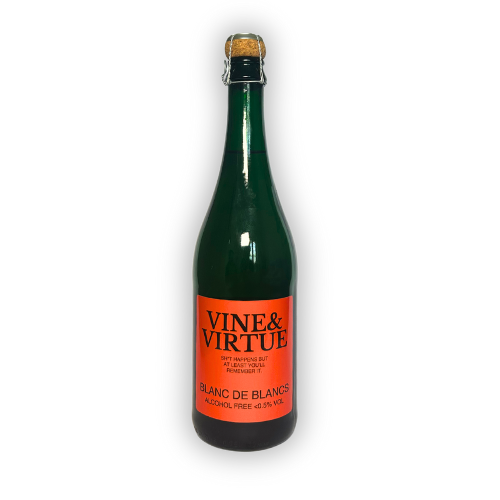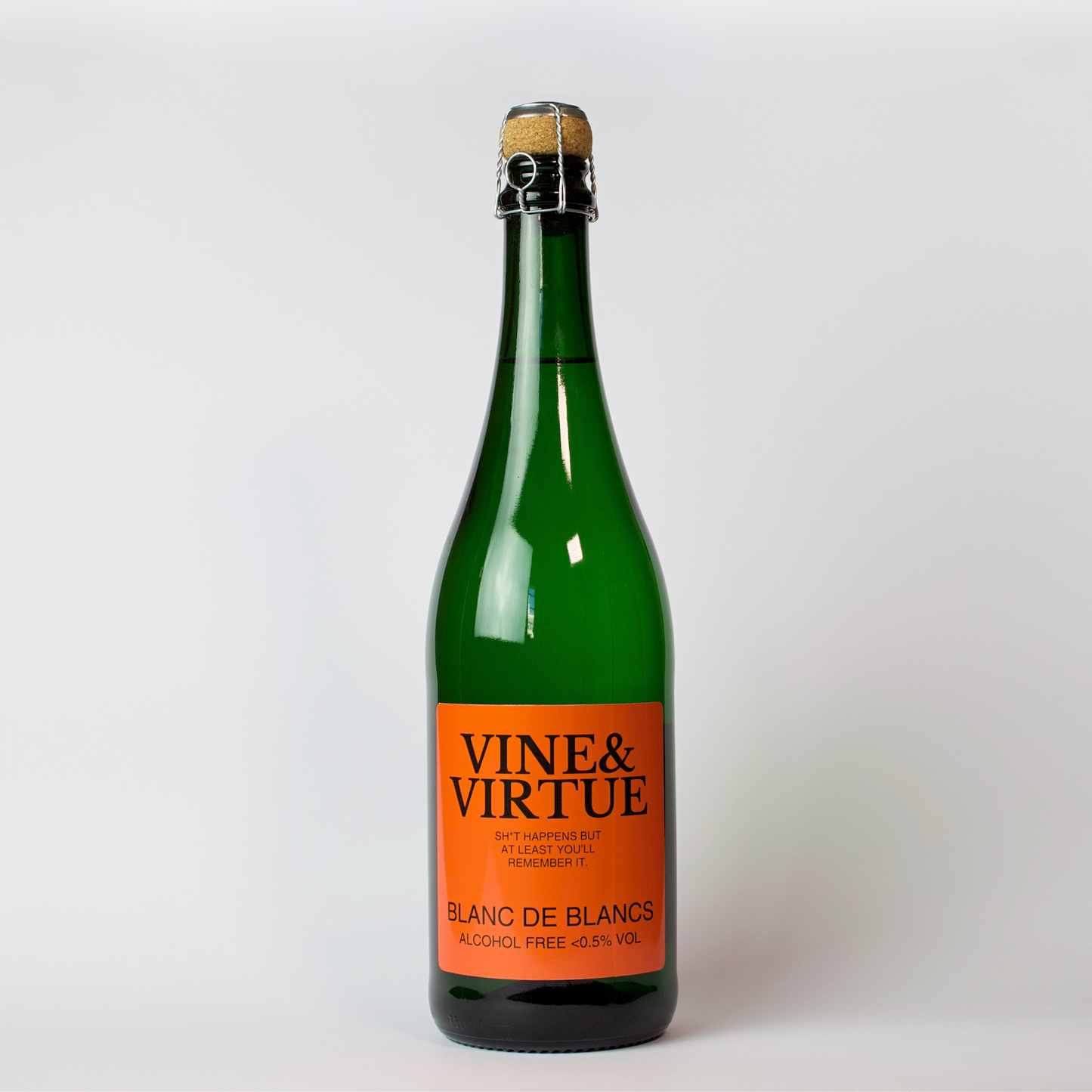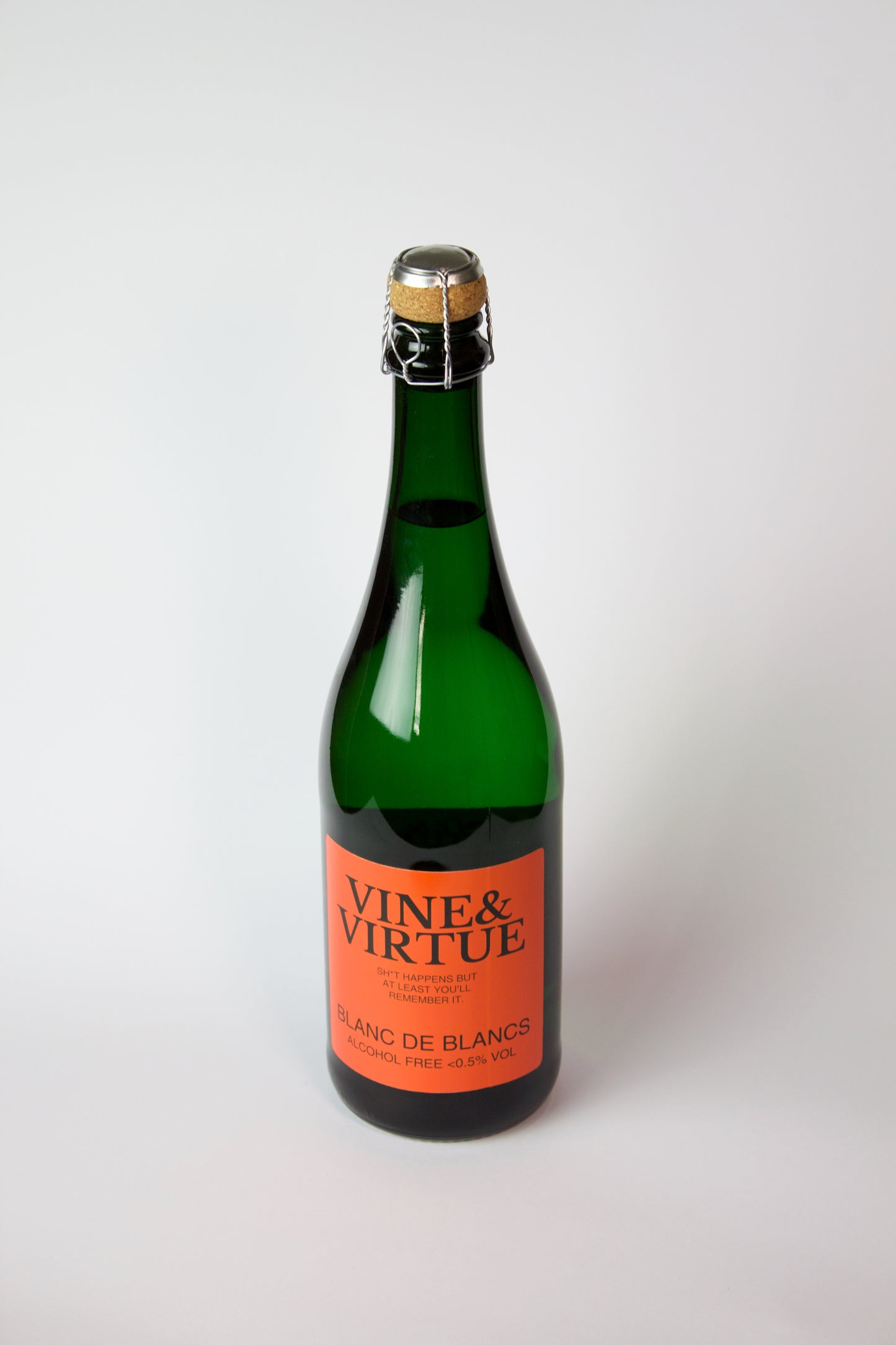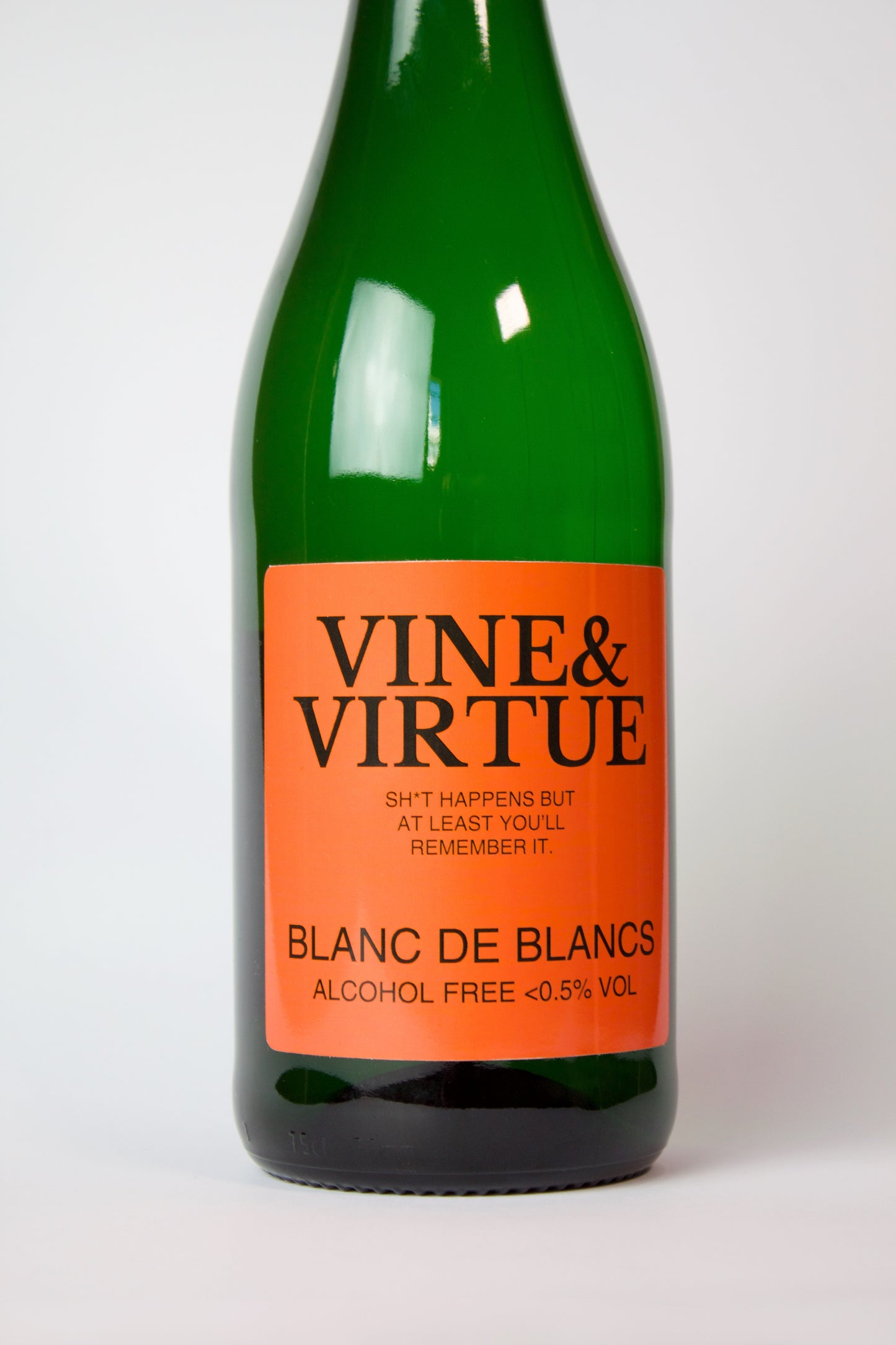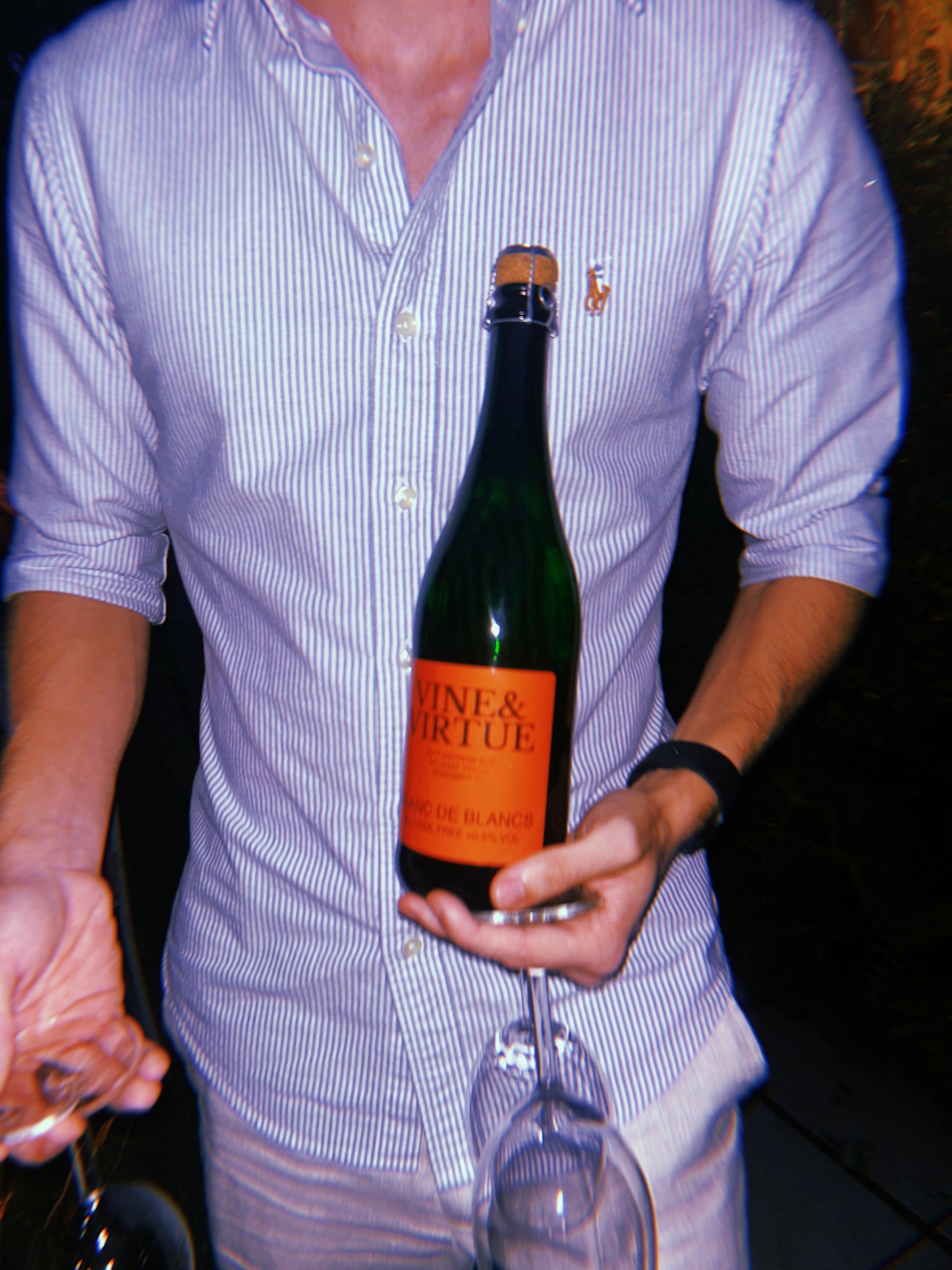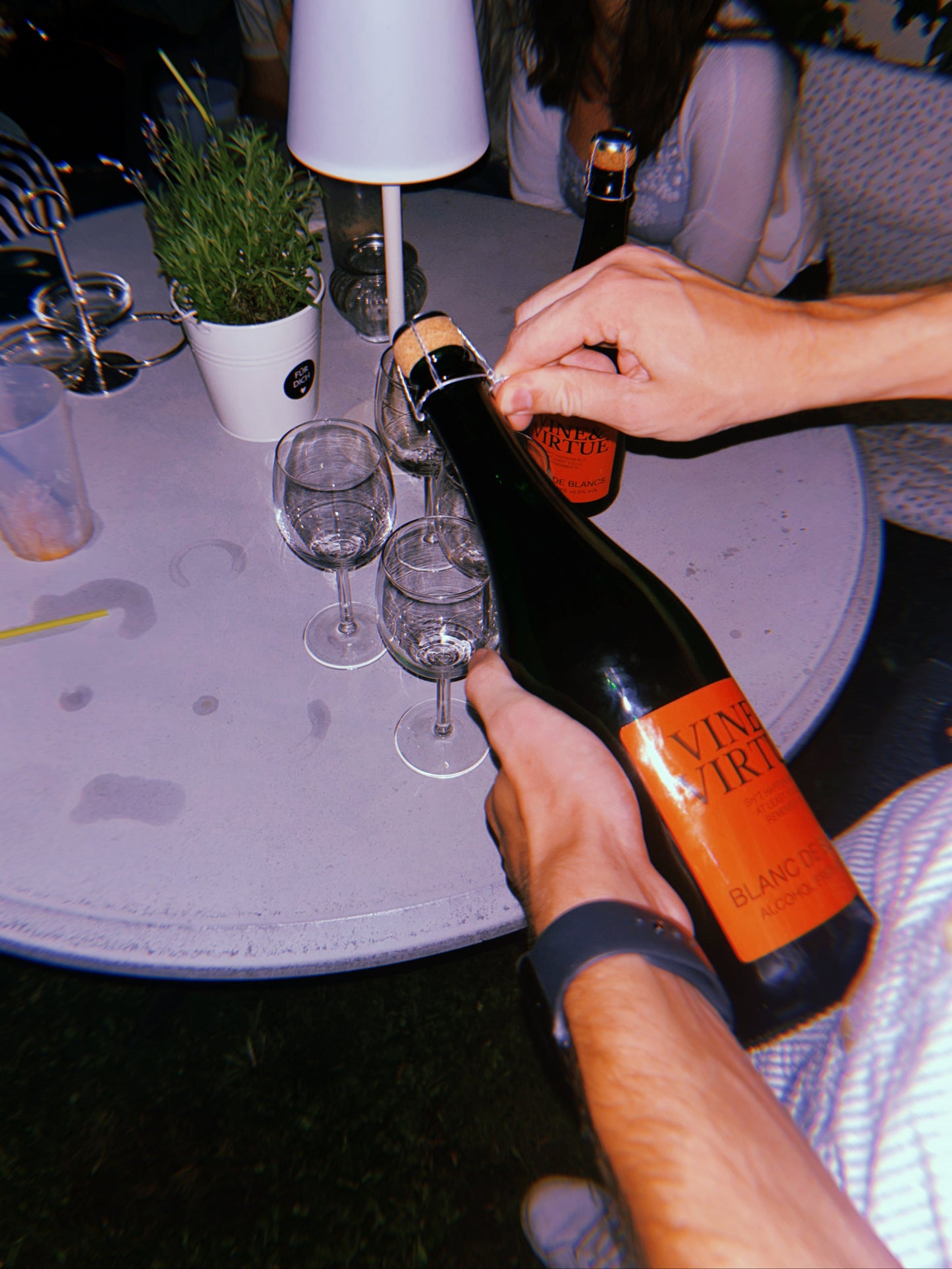What the f*ck is Dealcoholization?
Don't worry we will briefly explain to you how we transform classical - alcohol conataining - wines into our alcohol free masterpieces.
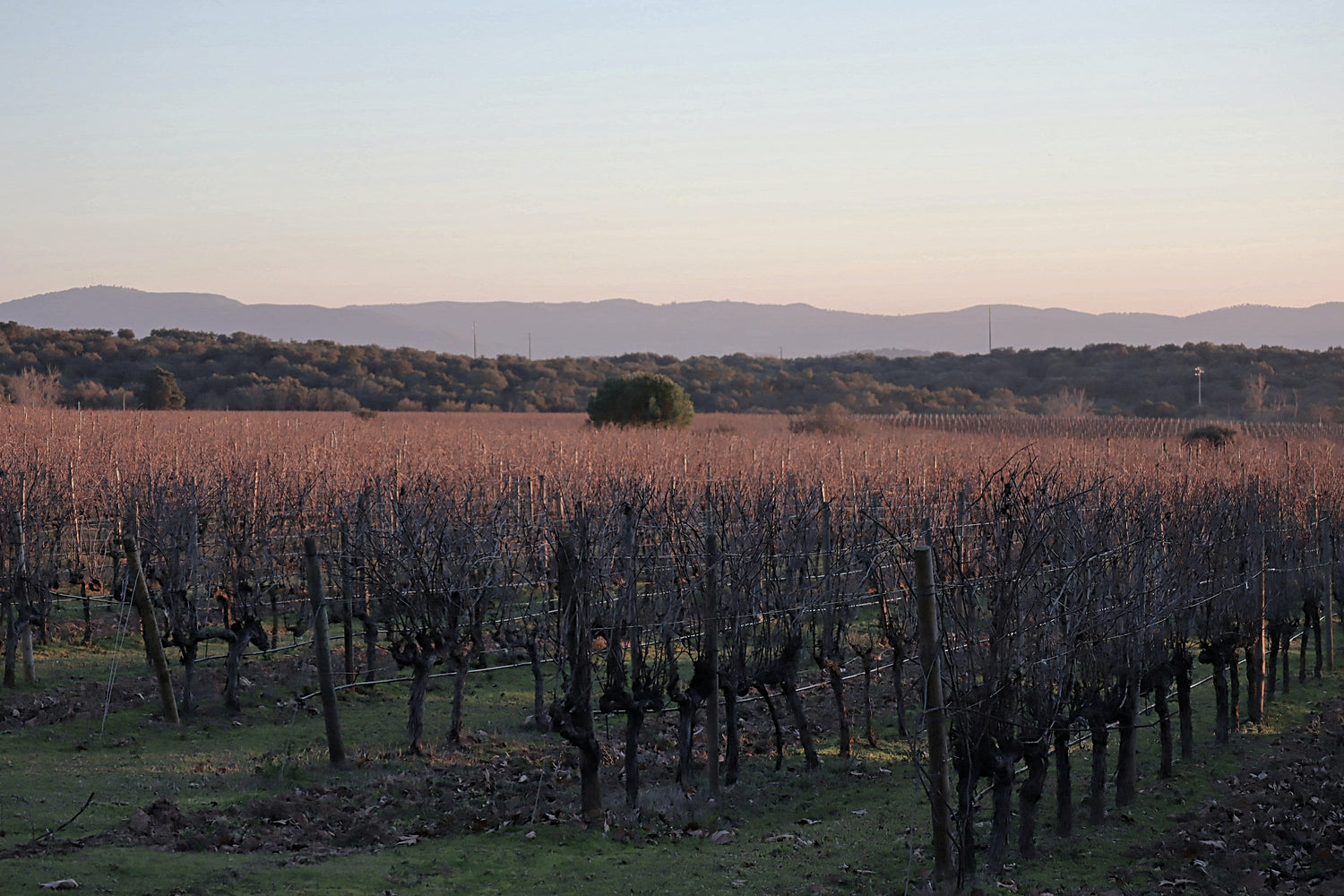
/1 Growing wine
It all begins in the vineyard, where we carefully tend to our vines. The grapes are given the best conditions to grow—sunshine, cool nights, and just the right amount of attention. Our vineyards are rooted in tradition, with each harvest representing the unique character of the land. The result? Grapes that are as flavorful as they are fresh, ready to be transformed into wine.
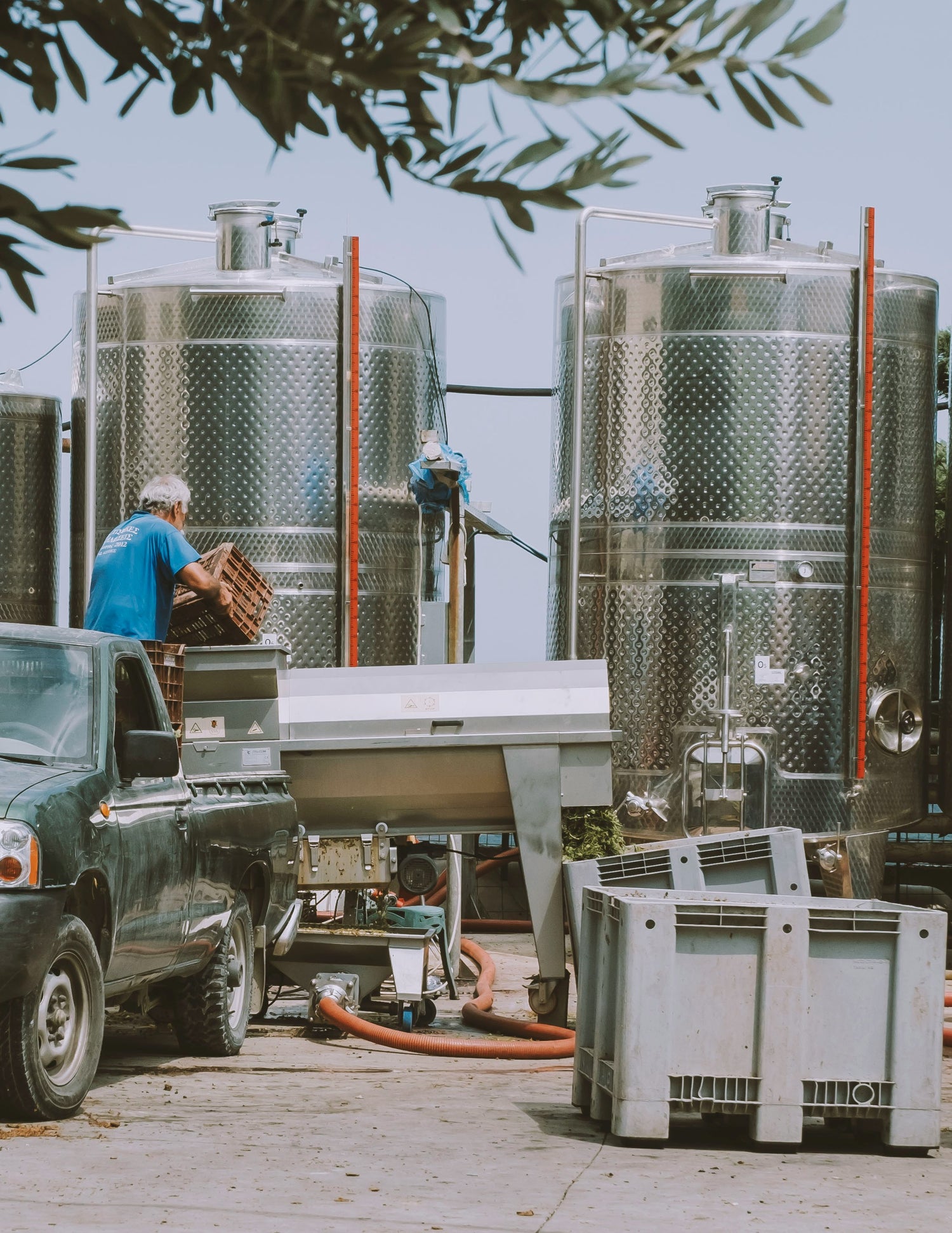
/2 Processing
Once the grapes are harvested, we follow time-honored methods to turn them into wine. From crushing to fermentation, every step is carefully managed to preserve the natural flavors and aromas. We age our wine with precision, allowing it to develop complexity and depth. It’s all about creating a wine that’s as true to its roots as it is enjoyable to drink.
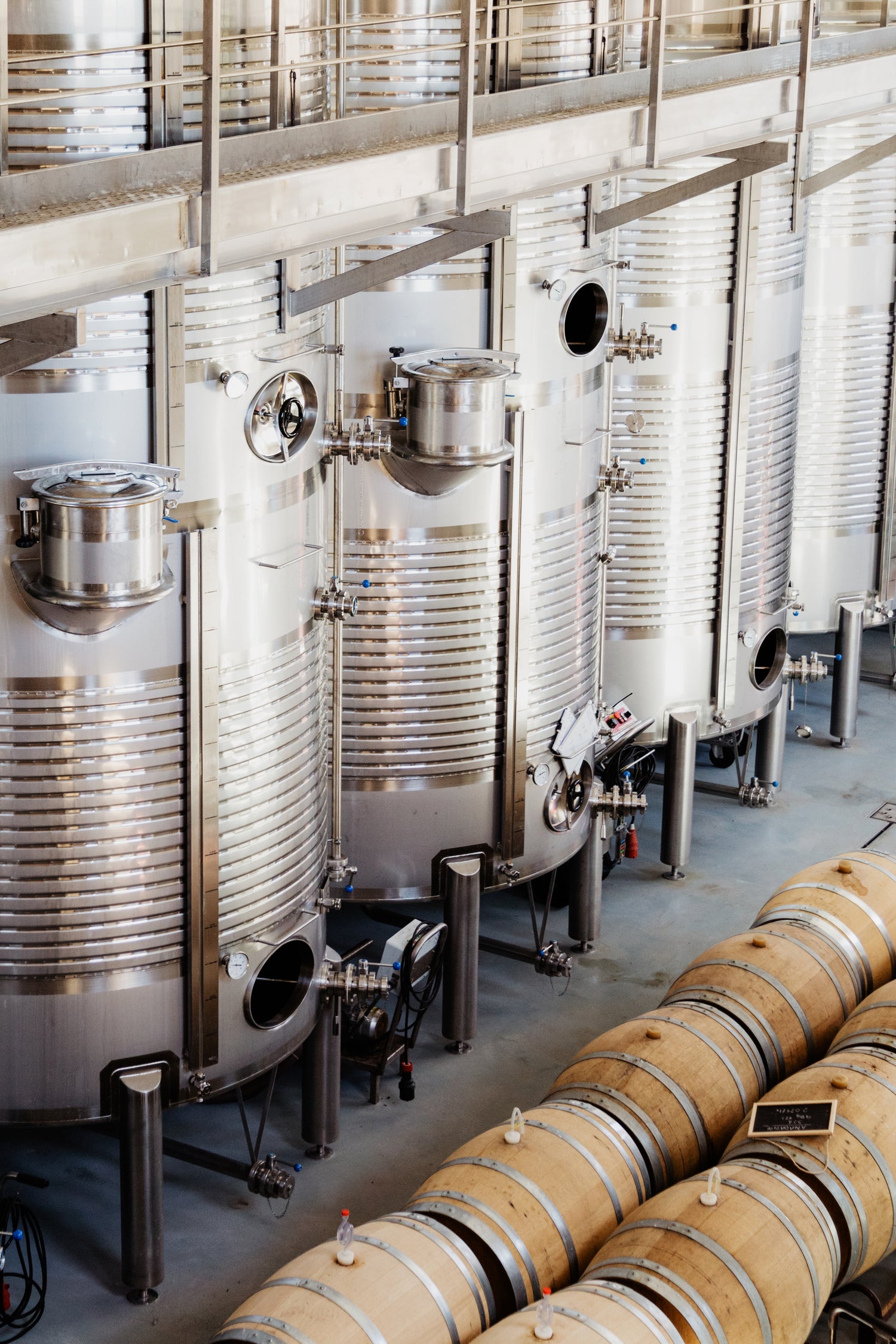
/3 Dealcoholization
The final step is dealcoholization, where we gently remove the alcohol while maintaining the wine’s character. Using advanced techniques, we ensure that the rich flavors and nuances of the wine remain intact, with alcohol levels reduced to under 0.5%—less than what you’ll find in some ripe fruits. This way, you can enjoy all the taste of wine, without the effects of alcohol.
The Science Behind It
-

The Basics
Wine contains ethanol (alcohol) that naturally develops during fermentation when yeast breaks down sugars in the grapes. During this process, alcohol levels can reach up to 15% or more. In dealcoholization, the goal is to remove most of this ethanol without compromising the wine's flavor and aroma.
-

Vacuum Distillation
In this method, the wine is placed under a vacuum, which lowers the pressure around it. Lower pressure allows the alcohol to evaporate at a much lower temperature than it normally would. This means the wine heats up only slightly, preventing the delicate flavors from being cooked off. The alcohol evaporates at a temperature of around 28-30°C - much lower than the boiling point of alcohol, which is 78°C.
- Why it works: By lowering the pressure, alcohol evaporates more easily without affecting the other components of the wine, like its aromatic compounds or tannins.
-

Refinement
After the alcohol is removed, the wine still needs a little refinement. This can include blending the wine back with a small amount of water or wine concentrate to maintain the right balance of flavors, acidity, and body. Sometimes, the wine will be aged a little longer to help integrate the flavors.
- Why it works: This step ensures that the wine is not just alcohol-free but also well-rounded and pleasant to drink. It allows for adjustments in flavor and body without the alcohol.
-

The Finished Product
Once the dealcoholized wine is refined, it’s tested to ensure the alcohol content is under 0.5%. The final product is then bottled, ready for you to enjoy!
Ready to experience it yourself?
Let's start shopping and convince yourself and your friends!
VINE&VIRTUE
Blanc de Blancs - alcohol free
